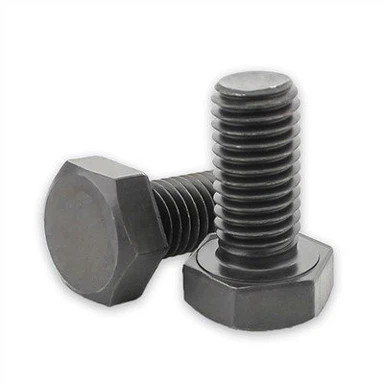Scientific Selection: An Effective Guide To Choosing Bolt Standards
Mar 06, 2025
Bolts, as a type of standard parts product with extremely wide applications, are extensively used in various industries, such as mechanical equipment, vehicles and ships, aviation and railway, construction and bridges, electronics and electrical appliances, tools and instruments, etc. They can be said to be everywhere. Since various bolts have different performances, we can use some simple techniques to quickly determine which industries these bolts are suitable for.
I. Determining the Standard Based on the Name
First of all, the name of the bolt actually often reflects its corresponding standard. For example, when we call it an external hexagon bolt, it means that it follows a specific national standard. If we mention an internal hexagon screw, it refers to another standard. After clarifying the standard, the next step is to pay attention to the specification and size. Basically, the specification of a bolt is mainly determined by two key indicators: the thread diameter and the thread length. And in the standards of internal and external hexagons, the size of the bolt head is already fixed. When describing the thread, if necessary, the pitch also needs to be supplemented with an explanation, especially the difference between fine threads and coarse threads, as well as the distinctions between British threads and American threads.
II. Understanding the Characteristics of Bolt Materials
After figuring out the standard and the specification size, the next thing is to know the material of the bolt. The materials commonly used for manufacturing bolts mainly include four types: stainless steel, carbon steel, copper, and aluminum. If it is stainless steel, the common types are SUS304 and SUS316. Of course, there is also SUS410, which is used for manufacturing self-tapping screws. However, SUS304 and SUS316 are the two most commonly used stainless steel materials for all bolts and nuts. If it is carbon steel, according to the strength grade, it can be divided into grades such as 4.8, 8.8, 10.9, and 12.9. Different grades correspond to different carbon steel materials. The distinction between copper and aluminum is relatively simple, which can be identified by their colors.
III. Considering the Requirements of Surface Treatment
Next, it is necessary to check whether there are specific requirements for the surface treatment of the bolt. Currently, the commonly used surface treatment methods for bolts include: blackening, galvanizing, copper plating, nickel plating, chromium plating, silver plating, gold plating, Dacromet coating, hot-dip galvanizing, etc. Different surface treatment methods are applicable to different usage environments, and their anti-corrosion performances also vary. Therefore, a reasonable choice should be made according to the actual usage environment.
IV. Checking the Performance Parameters
After completing the preliminary selection of all these hardware standard parts, it is necessary to check whether the performance parameters of the bolts are consistent with the design requirements. The performance parameters of stainless steel bolts depend on their materials, that is, the bolts produced will have the same performance as the materials. This is already determined when the materials are selected. As for the performance of carbon steel bolts, since it involves the subsequent heat treatment process, it needs to be regulated. The heat treatment process is mainly aimed at carbon steel bolts. Generally, bolts with a strength grade of 8.8 and above need to undergo heat treatment. After the heat treatment of bolts of this strength, special attention should be paid to their hydrogen embrittlement coefficient. These are all important quality-related issues in practical applications after the bolt standards have been selected. Since these cannot be directly observed with the naked eye, during the inspection and acceptance, the supplier is required to provide relevant data on the heat treatment and mechanical properties of the bolts. The designers then need to compare these technical parameters with the technical parameters of the equipment design. If they match, the bolts can be used with confidence.







